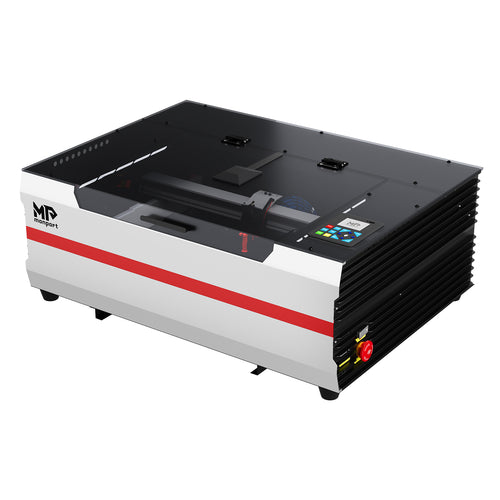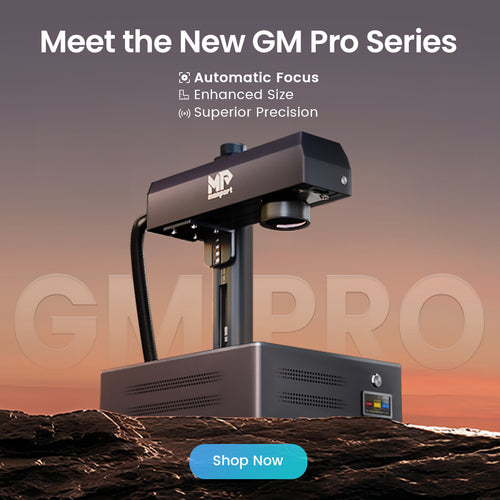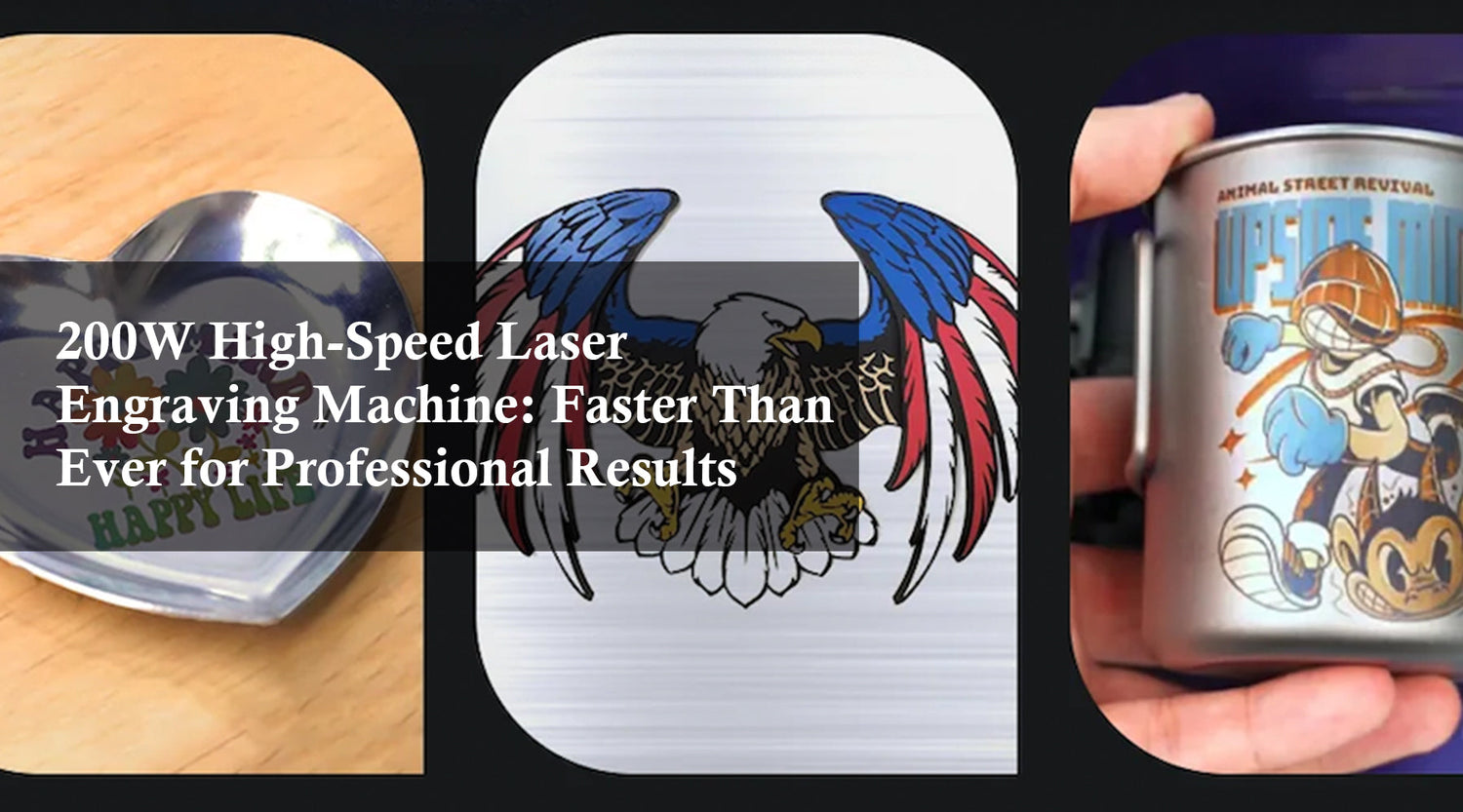Introduction
Laser marking food has emerged as a revolutionary technique that offers numerous advantages over traditional labeling methods. This innovative approach not only enhances food safety and traceability but also contributes to environmental sustainability.
Traditional food labeling methods often involve the use of inks, adhesives, and packaging materials that can potentially contaminate products or harm the environment. With laser engraved food and a CO2 laser machine, this issue is avoided, offering a more hygienic and efficient method.
Laser marking eliminates the need for these materials, creating a direct and hygienic method of marking food items. By using a high-powered laser beam to etch information onto the food surface, laser engraving ensures product integrity while reducing waste and environmental impact.

Monport 80W CO2 Laser Engraver & Cutter (36" x 24") with FDA Approved
ReadMore : Techniques for Making Laser Engraved Food
Ⅰ.CO2 laser in the food industry
Many industries now use laser engraving and cutting technology to manufacture high-quality metal, plastic, wood, and fabric products and parts. These systems are also valuable in preventing product counterfeiting through accurate labels and bar codes. With the emergence of new laser applications, more and more amateurs and hands-on people are recognizing the creative advantages of affordable CO2 laser machine options. An emerging application of these two devices provides a different form of practical and artistic support: processing, branding, and customized edible food products through laser engraved food.
International distributors of fresh organic fruits and vegetables are removing packaging and labels from their products by using CO2 lasers to naturally mark fruits and vegetables before shipment. The use of laser engraving food for natural brand promotion is becoming more and more popular, especially in the organic food industry, which needs to use direct labels to distinguish organic food from traditional fruits and vegetables. Laser engraving food is safe, non-toxic, and efficient, and replaces plastics harmful to the environment. One distributor said that by eliminating plastic and other packaging materials from avocados alone, 750,000 plastic flow packaging could be saved this year.

Laser engraving is usually used in the food industry to process containers and packaging bags, but it can also be used to make cakes, biscuits, chocolate bars, and even toast. This opens the door to artistic personalization and creative goods. Like any other substrate, when you laser engrave food with a CO2 laser machine, you burn the surface slightly to produce depth and contrast. Since many foods — especially baked goods — are sweet, you may notice a slight caramel taste, depending on what you're eating. Japanese researchers also demonstrated how to use a desktop CO2 laser machine (usually used to cut or carve patterns on plastic, wood, and metal) to cook ingredients according to shape and composition, so as to make a variety of charming food. In a successful cooking experiment, they used a trained webcam to guide the light beam and laser engraving to cook bacon fat.
Ⅱ. Laser labeling & coding food technologies
1. Laser labeling on food to replace sticky labels on fruit

In recent years, people are more and more sensitive to the impact of production process on the environment. Manufacturers are trying to simplify the use of resources and materials and shift to more environmentally friendly production methods.
Laser labeling of food with laser marking: This is a natural branding! This phenomenon is called "natural branding", especially the packaging of fresh fruits and vegetables. In short, the natural branding is to replace the ordinary physical label pasted on the surface of fresh fruits and vegetables with the "natural" label obtained by laser engraved food using a CO2 laser machine. For the packaging industry, this means an overall reduction in the materials that make up the packaging products: cardboard boxes, packaging paper rolls, and plastic films are being replaced by biodegradable similar products, or just discarded.
Food laser labeling is a special application of CO2 laser marking. In the previous article, we evaluated the efficiency of laser engraving on organic materials such as wood or leather. Even food can be marked effortlessly. Broadly speaking, the laser marking process depends on the high energy density transmitted by the laser on the work piece surface. It is this process that produces the required marks on the surface.
The labeling process marked by CO2 laser is suitable for any kind of fruits and vegetables. However, the best result is to use fruits and vegetables with wood or thin skin, such as tomatoes, apples, grapefruits, walnuts, chestnuts, coconuts, pumpkins, etc. In this area, pieces of information can also be marked, such as product traceability codes, expiration dates, manufacturer logos and other personalized information.
By laser engraving food with a CO2 laser machine, you no longer need traditional plastic packaging or label stickers. Laser engraved food is not only more eco-friendly, but also natural brands are non-toxic, safe, and efficient. In addition, in the long run, it is more cost-effective to choose to use CO2 laser machines to mark food.
2. Laser coding in the fruit and vegetable

Nowadays, consumers pursue both quality and safety in the products they buy and consume. Companies in the food and beverage industry need reliable and efficient laser engraving food techniques to ensure the quality of their fruits and vegetables and locate production batches quickly and accurately in case they need to be removed from circulation. Laser engraving food techniques were developed to control the traceability of food from farm to table, or "farm to fork" as the department usually knows. The objective is to have overall control over all products from origin to distribution point. This control starts from the farm of agricultural products (including animals, fruits, and vegetables), passes through the food processing industry, and ends at the store distributing agricultural products to consumers, and includes all agents intervening in the transportation and logistics of agricultural products.
Laser coding and labeling technology in the food industry. Although ink coding is traditionally the most widely used technology in the food and beverage industry, laser engraved food using a CO2 laser machine is becoming more and more popular because of its versatility, durability, cleanliness, and durability.
Its uses range from marking and coding on fruit and vegetable trays to cutting or micro perforated plastic films to ensure air circulation in fruit containers such as strawberries.
Ⅲ.Laser Marking on food : Easy, fast and eco-friendly
The benefits of food labeling are manifold:
- Low energy consumption:the CO2 laser system uses a very small amount of energy to complete this work, thus reducing the cost.
- No consumption of plastic, paper or glue:in the CO2 laser label of food, the label is directly engraved on the product surface. Therefore, the environmental footprint can be minimized. Cleanliness: with CO2 laser marking, the product will not come into contact with chemicals such as glue. Therefore, the hygiene of the product has been enhanced.
- Environmentally friendly: If laser marking is used instead of environmental protection, the use of many potentially polluting materials may become obsolete. Plastic or paper labels, glue and ink can be eliminated by laser labels. This will greatly reduce the ecological footprint. In this way, the harm of these products to the environment or consumers will be reduced.
- Precision and cleanliness: with digital control, characters, codes and images can be engraved at high resolution on the product surface without leaving any type of residue. This feature makes it easy to "print" QR codes, barcodes, or complex logos.
- Higher productivity: the laser marking process is very fast. Although the processing speed depends on the complexity of the information that must be engraved, in most cases, the processing time ranges from a few seconds of simple code to a few seconds of complex geometry.
- Indelible: Laser markings are directly applied to the surfaceof the product, therefore they cannot be erased and difficult to forge. This technology is the perfect product with symbol that ensure its origin or quality.
Although many companies and insiders advocate that laser marking is a faster and more reliable method of traditional manufacturing methods, there are not so many voices that emphasize that the technology can obtain greater returns from an environmental point of view. Even in the branch of product labels, the benefits are obvious and amazing. Laser engraved food using a CO2 laser machine eliminates the need for unsustainable and solvent-based inks and paper and plastic label materials. This in itself makes manufacturing methods more sustainable. More importantly, laser-marked product containers are easier to recycle in standard material recycling facilities. From the perspective of customers, a brand will also get some scores if it adopts a "more environmentally friendly" method in its manufacturing process.
Ⅳ. Applications of laser food
Use laser technology to personalize food by laser engraving. By doing so, you can deliver information, brand your company, and even use food that can be distributed to guests at any event. Why not try to provide laser engraved food to meet client’s needs in a unique way? From fruits, biscuits, biscuits, vegetables and eggs, many foods can be successfully laser engraved.
The Laser Sandwich
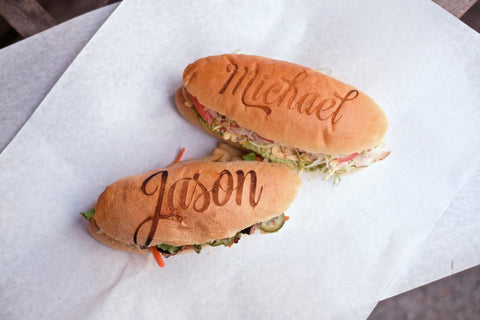
The most unique examples of laser engraving we've ever seen is a laser sandwich. Whether you are dining on the spot, looking for catering options, or even want a sandwich, you can "engrave" your name or personalized information on the bread. If you want more examples of crazy laser engraving, please read on.
Laser Engraved Chocolate bar

If the laser engraved food sandwich doesn't satisfy your desire, you may prefer to engrave your name or special information directly on the chocolate. Using a CO2 laser machine, you can also engrave a few words on the chocolate bar, including "Happy Valentine's Day". With personalized chocolate bars, you can express your love in a sweet and memorable way!
If you plan to use your laser engraver to customized food, blow foods also for your reference.
- Apple
- Avocado
- Banana
- Orange
- Melon
- Pumpkins
- Chocolate Bar
- Toast
- Colorful macaroon
- Eggs
- Hamburger
- Thanksgiving pies
- Christmas Cookies
- Holy Tortilla
Next, let’s look at some tips of laser engraving food.
Here are some basic considerations to keep in mind when engraving edible items such as fruits:
- Ensure that the working area is clean, the laser itself will not pollute the food.
- Test the settings required to ensure that the peel of fruits will not be damaged during processing.
- Pay attention to the energy setting. If the energy setting is too strong, the toast will be severely scorched.
- In the process of engraving toast with a laser engraving machine, it will produce some smoke. Please remember to connectthe Venting Exhaust Duct.
Procedures: (Material-Toast)
Step 1. Place the toast on the working table.
Step 2. Adjust laser head by operating the control panel, press auto-focus button
Step 3. Enter the tested parameter settings.
Step 4. Press the Start button to initiate the engraving process.
Step 5. Complete the work.

Is laser marking a safe process for food?
Laser engraving food is a safe process. Labeling only affects the outermost skin of fresh agricultural products; all sensory properties of food are respected. Their taste, color, or smell will not change, and the shelf life remains unchanged. Some papers also emphasize that laser engraving food will never reduce product quality. Laser engraving food of fresh products is an application to be explored. This possibility is broad and allows companies to significantly improve their environmental footprint.
Now, let’s start marking food with Monport laser!
FAQs
What materials can Monport laser machines handle?
Monport lasers work on wood, acrylic, metal, leather, glass, and more—ideal for versatile engraving and cutting.
What are the benefits of Monport CO₂ laser engravers?
They offer high precision, large work areas, and powerful cutting ability, perfect for creators and small businesses.
Why choose a Monport fiber laser?
Monport fiber lasers are built for speed and accuracy, making them excellent for metal engraving and industrial use.
Are Monport machines beginner-friendly?
Yes, many models come pre-assembled or semi-assembled, with intuitive controls and tutorials for easy setup.
What makes Monport stand out from competitors?
Monport offers affordable pricing, solid build quality, and great software compatibility—ideal for hobbyists and pros alike.
Enhance Your Metal Engraving with Monport Black Laser Marking Spray
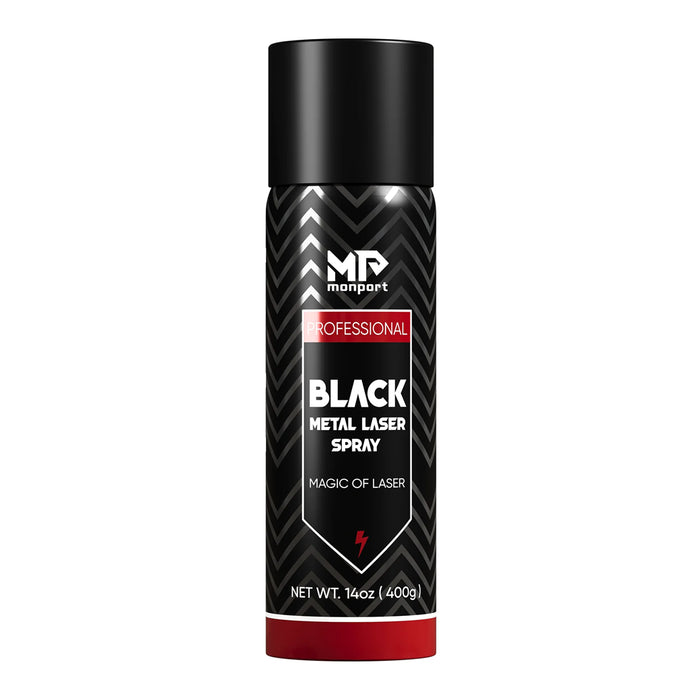
Monport black laser marking spray is designed to provide sharp, high-contrast markings on a variety of metals, including aluminum, brass, and stainless steel. When used with CO2 laser engraving machines, this black laser marking spray ensures a smooth, even application that delivers long-lasting, permanent marks. The quick-drying formula of this spray helps maintain a fast-paced workflow, allowing the markings to dry in just minutes. With its easy-to-use design, Monport black laser marking spray creates professional-grade results for any metal engraving project. Whether you’re customizing tools, jewelry, or industrial parts, this black laser marking spray will ensure your creations stand out with exceptional precision and clarity.
Celebrate Business Week with Monport! Now’s the perfect time to upgrade your setup with up to 30% OFF on laser machines and engraving materials! Buy any machine and unlock exclusive FREE gifts: get a FREE water chiller with CO₂ lasers, FREE rotary axis & LightBurn software with CO₂ purchases, and a FREE rotary axis with fiber lasers. Plus, enjoy a special $130 OFF on bundle deals. Don’t miss out—use code VIPFree or BESTMP10 at checkout for extra savings. Click here to shop now and power up your creative business!





